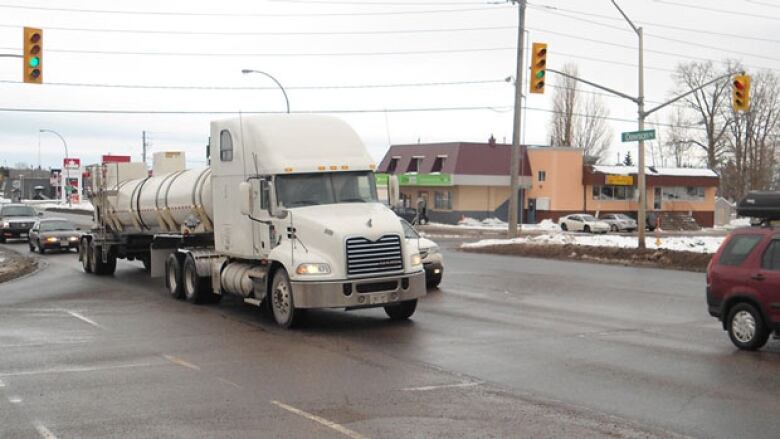The designated truck route through Thunder Bay is in limbo after the bylaw that would have implemented restrictions on cross-country heavy truck traffic was defeated.
The proposed bylaw, which would have been the final checkpoint for regulating transports off Dawson Road and Arthur Street to come and go from the city, was rejected by Thunder Bay city council at Monday night’s meeting.
It matters not to the home owners along the Dawson Road by-pass that Dawson Road was built as a truck bypass and designated as a Provincial Highway 102 before the city built up along the by-pass. In other words the bypass was built for trucks not for development.
In January, Council voted to approve the designated truck route and then subsequently ratified that decision in March. Both of those votes resulted in 7-6 margins.
The third, and potentially final vote that could have culminated the decade-long saga, resulted in a clear divide across the room as members of council that previously opposed the route all rejected the bylaw, with a result of 7-5 against.
Coun. Trevor Giertuga (At-Large), a staunch supporter of the route and the former ward councillor for the Dawson Road area, blasted councillors for voting against the bylaw as an attempt to circumvent the previous decisions.
The designated route dates back to around 2008, which was largely ignited by resident concerns about the volume of trucks using Dawson Road as a shortcut to Thunder Bay. A 24-hour traffic count done in 2016 found there was an average daily volume of 1,500 trucks on Highway 102 between Sistonen’s Corner and Dog Lake Road, which amounted to 38 per cent of total traffic.
The route, which would force all cross-country transport trucks to remain on the provincial highway 11/17 network and pass through Kakabeka Falls, has been opposed by most of the city’s outlying municipalities. Oliver Paipoonge mayor Lucy Kloosterhuis was present in council chambers, along with at least two other councillors and the mayors of Conmee, Neebing and O’Connor.
The proposed bylaw would also require heavy truck traffic to remain on the provincial highway 11/17, or use the Harbour Expressway to Main Street for as long as possible and then use the shortest route to their destination for local deliveries.
Thunder Bay Chamber of Commerce president Charla Robinson voiced opposition to that requirement, arguing it would harm local businesses that make deliveries to multiple locations.
Geoff Wood, the Ontario Trucking Association’s senior vice president of policy, appealed to council to reject the bylaw, taking issue with the regulations using a vehicle’s registered weight rather than actual weight as well as the impact it would have on preventing truck drivers from accessing restaurants, grocery stores and other services.
“It’s extremely important that we have regulations, bylaws or truck routes that work. It’s a two-way street,” Wood said after the vote. “There has to be give and take on both sides and understand that we need something that works for the community but also for the supply chain.”
When asked about whether he believed there could be a designated route that the association would support, Wood responded that it would be premature and the devil would be in the details.


